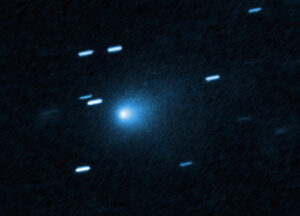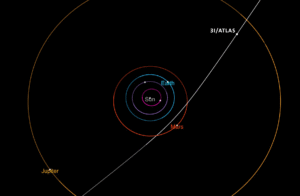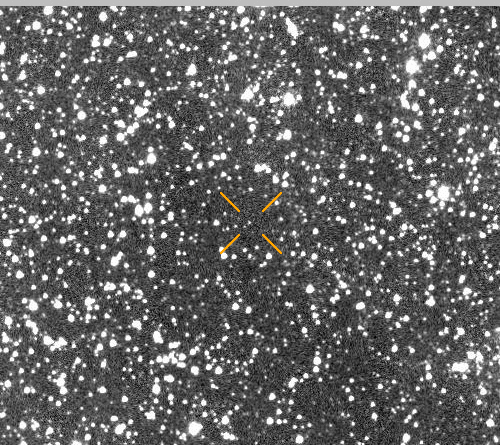3I/ATLAS Interstellar Object Emits Its Own Light: A Controversial Hypothesis by Avi Loeb
A Cosmic Visitor That Challenges Science
The phrase “3I/ATLAS interstellar object emits its own light” has quickly become one of the most debated topics in modern astrophysics. Discovered on July 1, 2025, 3I/ATLAS is the third known interstellar object to pass through our Solar System, after 1I/ʻOumuamua in 2017 and 2I/Borisov in 2019. Unlike ordinary comets and asteroids, however, this mysterious traveler seems to display properties that defy conventional explanation.
Harvard astrophysicist Avi Loeb has put forward a striking idea: instead of simply reflecting sunlight like other small bodies, 3I/ATLAS may actually generate its own light. If true, this would represent a revolutionary discovery with profound implications for astrophysics—and perhaps even for the search for extraterrestrial technology.
3I/ATLAS Interstellar Object Emits Its Own Light: The Core Claim
At the heart of Avi Loeb’s analysis is the possibility that the observed brightness of 3I/ATLAS comes not from reflected sunlight, but from its nucleus itself. The brightness profile, Loeb argues, is too steep to be explained by the usual coma of dust surrounding a comet. Instead, most of the emission appears tightly concentrated at the object’s core.
According to Loeb, the required luminosity is on the order of 10 gigawatts. If this light were the result of thermal emission above 1,000 Kelvin, the emitting area would be smaller than 100 meters in diameter—far more compact than earlier size estimates. This raises the question: how could an interstellar body shine in this way?
Why the Hypothesis Matters

The idea that the 3I/ATLAS interstellar object emits its own light is more than a curiosity—it challenges the very framework astronomers use to classify interstellar objects. Traditionally, researchers have categorized these visitors as either comet-like (active with gas and dust emissions) or asteroid-like (rocky and inert). But if 3I/ATLAS glows independently, it may belong to an entirely new category.
This raises provocative questions:
-
Could 3I/ATLAS be a rare fragment of radioactive material from a distant supernova?
-
Might it be powered by an unknown natural energy process?
-
Or is it even possible that this object represents some kind of extraterrestrial technology?
Loeb himself admits these ideas are speculative, but argues that science must remain open to bold possibilities.
Alternative Explanations Considered
To explore why the 3I/ATLAS interstellar object emits its own light, Loeb analyzed several potential sources:
1. Not a Primordial Black Hole
Although black holes radiate faintly through Hawking radiation, a tiny black hole at 1,000 K would emit only nanowatts—far below the observed luminosity. This explanation is ruled out.
2. Radioactive Decay from a Stellar Fragment
A fragment of a supernova’s radioactive core could, in theory, glow with its own energy. But such fragments would be exceedingly rare, making this scenario unlikely, though not impossible.
3. Artificial Nuclear Power Source
The boldest idea is that 3I/ATLAS could be an alien spacecraft using nuclear energy for propulsion or power. In this case, the glow would not be natural, but technological. Dust on its surface could be a result of interstellar travel. While speculative, Loeb argues that this possibility cannot be dismissed without further data.
Trajectory and Observational Clues

NASA/JPL-Caltech
Another strange feature of 3I/ATLAS is its trajectory. It travels along a path unusually aligned with the Solar System’s ecliptic plane and passes near several planets, including Venus, Mars, and Jupiter. Loeb notes that the probability of such a path occurring randomly is extremely low, making the object’s journey even more intriguing.
Key milestones include:
-
October 3, 2025: Close approach to Mars, about 29 million km away.
-
October 29, 2025: Closest approach to the Sun, though Earth will be on the opposite side, reducing observational opportunities.
-
Later in 2025: A possible encounter near Jupiter, where spacecraft like Juno could be redirected for close-up study.
These opportunities may help determine whether the 3I/ATLAS interstellar object emits its own light naturally or artificially.
Mainstream Scientific Response
Most astronomers remain cautious about Loeb’s claims. Early studies suggest 3I/ATLAS is a weakly active comet, with faint dust activity, a reddened spectrum, and detectable water emissions—all consistent with natural cometary behavior. Precovery data from telescopes like TESS show it began outgassing at great distances, again supporting the comet interpretation.
Still, even within mainstream science, the unusual brightness distribution noted by Loeb has raised questions. While most experts attribute this to cometary outbursts, others acknowledge that continued monitoring is essential.
Why the Debate Resonates
The debate over whether the 3I/ATLAS interstellar object emits its own light highlights a broader issue in science: how to balance skepticism with imagination. Loeb has argued that dismissing unusual observations too quickly risks overlooking major discoveries. His controversial stance on ʻOumuamua—suggesting it may have been alien technology—sparked heated debate but also inspired new research directions.
In the case of 3I/ATLAS, Loeb frames his hypothesis as a “pedagogical exercise” meant to encourage critical thinking and bold inquiry. Even if the final explanation is natural, the process of considering alternative possibilities strengthens the scientific method.
Future Observations: The Search for Answers
The coming months are critical for testing the claim that the 3I/ATLAS interstellar object emits its own light. Several strategies have been proposed:
-
Mars Reconnaissance Orbiter (HiRISE Camera): Could capture detailed images when 3I/ATLAS passes near Mars.
-
Juno at Jupiter: A potential redirection for a close flyby, though no mission change has been officially approved.
-
Ground-Based Observatories: Large telescopes may track its brightness evolution as it approaches the Sun.
-
Spectroscopy: Key to identifying whether the emission is thermal, radioactive, or reflective.
Each of these approaches could help confirm whether the light is self-generated or simply sunlight reflecting off unusual cometary material.
Conclusion: A Mystery That Demands Openness
The idea that the 3I/ATLAS interstellar object emits its own light remains controversial, but it forces scientists to think beyond conventional categories. If Loeb is correct, it could mark one of the most extraordinary discoveries in astronomy—a sign of exotic physics or even extraterrestrial engineering. If he is wrong, the exercise still sharpens scientific reasoning and underscores the importance of open-minded inquiry.
Either way, 3I/ATLAS has already succeeded in capturing global attention, reminding us that the universe is full of mysteries waiting to be understood.

